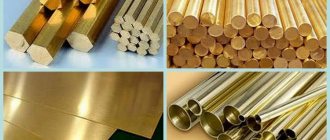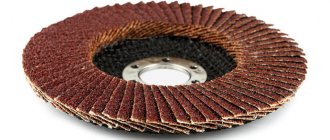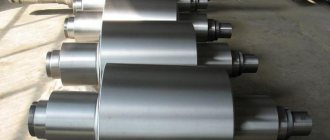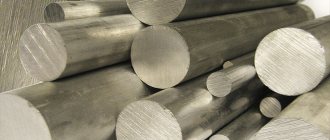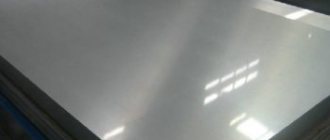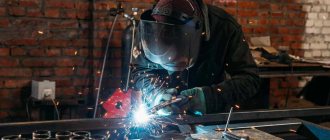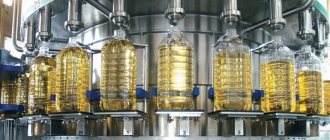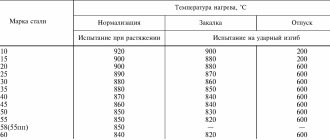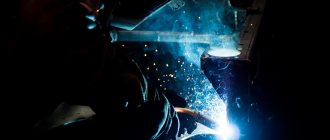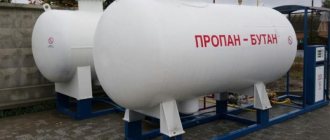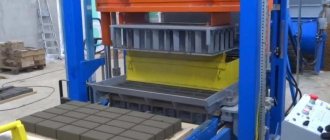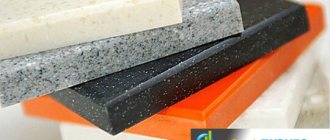A calibrated circle is a type of rolled steel and is a round bar. To produce such material, cold drawing technology using hot-rolled raw materials is used. Externally, the products are very similar to steel rods, but are distinguished by their evenness and accuracy. A calibrated circle serves as a blank from which various parts for mechanisms, bolted joints, pins, shafts, etc. are made. That is why strict accuracy requirements are imposed on such material.
Manufacturing technology
The main feature of the calibrated wheel is high geometric accuracy, as well as increased surface quality and strength. Production of rolled products can be carried out in one of two ways:
- cold rolling method - involves passing the workpiece through the rolls of roughing and finishing stands, which helps to reduce the cross-section. A similar technology is used for the production of hot-rolled wheels, the only difference is that the rolled product is not preheated;
- drawing a hot-rolled rod through a die with a smaller cross-section than the workpiece. This method is also called drawing.
The resulting calibrated wheel can be subjected to auxiliary processing, which includes polishing and grinding in order to reduce the level of roughness and increase accuracy.
Technology for manufacturing calibrated circles using the drawing method from hot-rolled raw materials
To make a steel wheel, the raw steel is preheated. After this, the workpiece is passed through a round hole, the size of which is smaller in diameter than the cross-section of the circle workpiece. The process is carried out under high pressure. At the end of production, the length of the finished product increases, and the diameter, on the contrary, decreases.
The calibration process takes place on the coining press. The workpiece is clamped between its plates and brought to the desired size. The cold calibration method allows you to achieve ideal compliance with GOST characteristics.
The calibrated circle is made from the following steel grades:
- unalloyed tool steel grades U10A, U8A;
- carbon steel 09G2, 17GS, 12GS, 19G, 14G, 18G2, 16GS;
- structural steel with an increased level of machinability AS40X, A30, AS14, AS40, AS35G2, A12;
- fireproof steel with high corrosion resistance 15Х25, 40Х13, 10Х17Н13МДТ, 08Х18Н10Т, 20Х13, 23Х23Н18;
- alloyed steel alloys 30KhGSA, 40KhN2MA, 14KhGN, 35KhGSA, 20KhN, 20KhM, 40Kh, 45G, 30G, 19KhGN, 15KhN2TA, 12KhN.
These steel alloys are regulated according to GOST 7417-75 for steel calibrated circles.
Unalloyed tool steel grade U8A is used to produce calibrated wheels with a special type of surface treatment. The quality of this product is regulated by GOST 14955. When making such a calibrated circle, the top layer of metal is removed using special tools. Such a circle has a cross-section of 0.2 mm. up to 50 mm.
Where are the products used?
The most popular is the method of manufacturing a calibrated circle by drawing, which allows you to obtain the most accurate dimensions while imparting special properties to the surface. Rods obtained using this technology have strength and elasticity and are used in the following areas and areas:
- Oil refining and gas production industry.
- Mechanical engineering.
- Machine tool manufacturing.
- Construction of fences and gates.
The reasons for the popularity of the product are due to the fact that it does not require additional mechanical processing. This reduces the financial costs of using processing equipment.
Thanks to special technology, the output is high-precision products that are free from all types of flaws on the surface. The advantage of calibrated steel is its long service life. The positive technical properties of this material make it possible to use it in various fields and industries and even in aggressive conditions.
Specifications
The calibrated circle is obtained according to the GOST 7417-75 standard, which provides the following features:
- production of rolled products with three types of surface quality - A, B and C (medium, high and increased accuracy);
- four types of quality: h9, h10, h11 and h.
Products are manufactured using various grades of steel. For this purpose, alloyed, low-alloyed, as well as carbon and high-carbon steels are used. The length of the rods varies from 1.5 to 6.5 meters, and if it is necessary to obtain large-sized blanks, they are produced on special order.
The manufactured products have the following technical features:
- Round cross-section in the form of rods.
- The cut is made at a right angle.
- Section diameter - from 5 to 100 mm. According to GOST 7417-75, only a slight deviation is allowed in the range from 0.1 to 0.3 mm.
- The production material is different grades of steel that are resistant to corrosion, temperature changes and mechanical stress.
Calibrated wheels are supplied in coils if their cross-section does not exceed 25 mm. If the rental is greater than this value, then it is supplied in measured or unmeasured length. The workpieces are marked with a marking indicating the diameter, the grade of steel used and the type of strength.
Wear resistance determines the possibility of using rolled steel to produce various parts operated under conditions of increased loads. The cost of products is influenced by factors such as steel grade, rolling accuracy, quality, diameter and length.
In contact with
Post Views: View statistics 875
GOST 1051-73 Calibrated rolled products. General technical conditions
STATE STANDARD OF THE USSR UNION
| RENTAL CALIBRATED General technical conditions Gauged bars. General specifications | GOST 1051-73 |
Date of introduction 01/01/75
This standard applies to calibrated rolled round, square and hexagonal profiles made of steel: carbon and alloyed high-quality structural steel; spring-spring; increased and high machinability, carbon, alloy and high-speed tool, heat-resistant; Corrosion-resistant, heat-resistant and heat-resistant.
(Changed edition, Amendment No. 3).
1.1. The range of rolled products must comply with GOST 7417-75, GOST 8559-75 and GOST 8560-78.
1.2. The ends of the rods must be cut off.
Burrs and bends that lead the rods beyond their nominal cross-sectional dimensions are not allowed.
The miter cut must comply with the requirements of GOST 7417-75, GOST 8559-75, GOST 8560-78.
When cutting with scissors, crushing of one cut end is allowed, provided that the size of the second drawn end is maintained. A tightening is allowed at the drawn end. By agreement between the manufacturer and the consumer, crushing of both cut ends is allowed. The amount of collapse of the ends should not lead the cross-sectional dimensions of the rods beyond the nominal size.
The crushing length of the ends of the rods should not exceed the standards specified in the table. 1.
Table 1
| Rod size, mm | Length of crumpled ends, no more, mm |
| Up to 25 | 20 |
| St. 25 to 50 | 25 |
| » 50 » 70 | 30 |
On rods cut with scissors, burrs are allowed, the size of which is established by agreement between the manufacturer and the consumer.
At the request of the consumer, the rods are made with a chamfer at one end, and by agreement between the manufacturer and the consumer - with a chamfer at both ends.
If necessary, the dimensions of the chamfer are established by agreement between the manufacturer and the consumer.
Examples of symbols
Round rolled products, 8 mm in diameter, quality h 12 according to GOST 7417-75, made of high-quality carbon structural steel grade 45, with surface quality group B, cold-worked - N:
Square rolled products, with a square side of 15 mm, quality h 11 according to GOST 8559-75, from alloy structural steel grade 20X, with surface quality group B, heat treated - T:
Hexagonal rolled products, with an inscribed circle diameter of 8 mm, quality h 10 GOST 8560-78, from structural steel of increased and high machinability by cutting grade AC14, with surface quality group B, cold-worked - H:
(Changed edition, Amendment No. 3).
2.1 a. Calibrated rolled products are manufactured in accordance with the requirements of this standard according to technological regulations approved in the prescribed manner.
(Changed edition, Amendment No. 3).
2.1. In accordance with the order, rolled products are produced in a cold-worked state - N or in a heat-treated state - T (annealed, highly tempered, normalized with tempering, hardened with tempering, hardened).
(Changed edition, Amendment No. 1).
2.2. The surface of calibrated rolled products must be clean, smooth, light or matte, without cracks, films, sunsets and scale and, depending on the quality of the surface, is divided into groups indicated in table. 2.
The surface quality group and quality are specified in the order.
On the surface of rolled products, helical marks from straightening and drawing are allowed, which are obtained during the production process and do not violate the continuity of the metal, if the depth of their occurrence does not exceed the standards of Table. 2 set for surface defects.
table 2
| Surface quality group | Quality | Allowable surface defects | The greatest depth of defects |
| A | h 9 | Individual minor risks of mechanical origin | Established by agreement between the manufacturer and the consumer |
| h 10 | 1/2 maximum deviations | ||
| B | h10, h11, h 10 | Individual small risks of mechanical origin, scale residues, fingerprints, rippling, shallow stripping, traces of abrasive cleaning | Limit deviations |
| IN | h 10, h 11 | Isolated small risks of mechanical origin, scale residues, fingerprints, rippling, shallow stripping, traces of abrasive stripping, individual small rolled out and loosened bubbles and dirt (hairs) | Limit deviations |
| IN | h 12 | Individual small risks of mechanical origin, scale residues, fingerprints, ripples, gentle stripping, traces of abrasive stripping. In addition, individual small loosened and rolled out bubbles and dirt (hair strands) | Limit deviations for quality h 12 |
| Limit deviations for quality h 11 | |||
| Notes: 1. The depth of defects is calculated from the actual size. 2. An oxide film is allowed on the surface of heat-treated rolled products. 3 It is allowed to clarify the surface characteristics according to agreed standards indicating the type and number of defects per unit of surface. 4. At the request of the rental customer, we produce: a) groups A and B with normalized surface roughness according to Rz no more than 20 µm with a base length of 2.5 mm, b) groups B and C - with the greatest depth of defects no more than half of the maximum deviations for h 10 and h 11. 5. It is allowed to remove defects by grinding. 6. Calibrated rolled products of quality h 9 are produced by agreement between the manufacturer and the consumer. | |||
(Changed edition, Amendment No. 1, 2, 3).
2.3. The chemical composition, macrostructure and hardness of rolled products must comply with GOST 1050-88, GOST 1414-75, GOST 1435-74, GOST 4543-71, GOST 5949-75, GOST 5950-73, GOST 14959-79, GOST 19265-73 and GOST 20072-74.
Note. Hardness standards for heat-treated (normalized, normalized with tempering, hardened with tempering, hardened) calibrated rolled products, if they are not regulated by standards, are established by agreement between the manufacturer and the consumer.
(Changed edition, Amendment No. 3).
2.4. (Deleted, Amendment No. 3).
3.1. General acceptance rules - according to GOST 7566-81.
3.2. Calibrated rolled products are accepted in batches consisting of steel of the same grade, one heat, one size, one surface quality group and one type of processing. Each batch is accompanied by a quality document in accordance with GOST 7566-81.
Note. By agreement with the consumer, a batch may include rods or coils of the same grade of steel from several melts.
(Changed edition, Amendment No. 3).
3.3. To check the quality of rolled products, a sample is taken from a batch of bars or coils in accordance with the standards for the corresponding steel grade listed in clause 2.3 with the following addition:
to control hardness and roughness - three rods or coils, unless a larger number is specified in the standards listed in clause 2.3.
(Changed edition, Amendment No. 3).
3.4. If unsatisfactory test results are obtained for at least one of the indicators, repeated tests are carried out in accordance with GOST 7566-81. The results of repeated tests apply to the entire batch.
(Introduced additionally, Amendment No. 2).
4.1. Control methods must comply with the standards for the relevant steel grades listed in clause 2.3.
The chemical composition of calibrated steel may not be determined, but transferred from the document on the quality of hot-rolled steel.
(Changed edition, Amendment No. 3).
4.2a. From each rod or coil selected for control, a number of samples are taken in accordance with the standards for the corresponding steel grade listed in clause 2.3.
(Introduced additionally, Amendment No. 2).
4.2. The surface quality of rolled products is checked using non-destructive testing methods or inspection without the use of magnifying devices. If necessary, lighten the surface with a file or abrasive wheel. The depth of surface defects is determined by control cleaning.
(Changed edition, Amendment No. 3).
4.3. Surface roughness parameters are determined according to GOST 2789-73.
(Changed edition, Amendment No. 1).
4.4. The dimensions of the rolled section are checked: at a distance of at least 25 cm from the end - for bars of irregular length or coils;
at a distance not less than the actual length allowance - for bars of measured or multiple measured lengths.
The dimensions and shape of rolled products are checked using measuring instruments of appropriate accuracy.
4.5. The hardness of rolled products is determined according to GOST 9012-59.
4.6. Macrostructure control is carried out according to GOST 10243-75.
It is allowed to extend the test results of rolled products that have passed macrostructure control on large hot-rolled rolled sections to calibrated rolled products.
4.5; 4.6. (Changed edition, Amendment No. 3).
5.1. Labeling, packaging, transportation and storage - in accordance with GOST 7566-81 with additions.
(Changed edition, Amendment No. 2).
5.1.1. Marking tags are firmly attached to the harnesses on the side convenient for viewing, or placed in a special pocket. It is allowed to attach one label to the end of the rod from the end of the bundle.
5.1.2. Products are transported by all types of transport in accordance with the rules for the transportation of goods in force for this type of transport.
Packaging means (tying into bundles) - according to GOST 7566-81.
When sending two or more packages to one address, the dimensions of which allow you to arrange a transport package with dimensions in accordance with GOST 24597-81, the packages must be formed into transport packages in accordance with regulatory and technical documentation and GOST 21650-76.
5.1.1; 5.1.2. (Introduced additionally, Amendment No. 2).
5.2. Steel products, with the exception of corrosion-resistant ones, must be coated with a lubricant to protect them from corrosion.
By agreement of the parties, it is possible to determine the composition of the lubricants and coatings used, as well as to supply products without lubricant.
At the request of the consumer, products can be preserved in accordance with the requirements of GOST 9.014-78.
1. DEVELOPED AND INTRODUCED by the USSR Ministry of Ferrous Metallurgy
DEVELOPERS
I.N. Golikov, Doctor of Engineering. sciences; S.S. Gratsianova, director.
2. APPROVED AND ENTERED INTO EFFECT by Resolution of the State Committee of Standards of the Council of Ministers of the USSR dated March 21, 1973 No. 625
3. INSTEAD OF GOST 1051-59 regarding section. 1 (surface quality) and Sec. 2 and 3
4. REFERENCE REGULATIVE AND TECHNICAL DOCUMENTS
| Designation of the referenced technical document | Number of paragraph, subparagraph |
| GOST 9.014-78 | 5.2 |
| GOST 1050-88 | 2.3 |
| GOST 1414-75 | 2.3 |
| GOST 1435-90 | 2.3 |
| GOST 2789-73 | 4.3 |
| GOST 4543-71 | 2.3 |
| GOST 5949-75 | 2.3 |
| GOST 5950-73 | 2.3 |
| GOST 7417-75 | 1.1 ; 1.2 |
| GOST 7566-81 | 2.5 ; 3.1; 3.2; 3.4; 5.1; 5.1.2 |
| GOST 8559-75 | 1.1 ; 1.2 |
| GOST 8560-78 | 1.1 ; 1.2 |
| GOST 9012-59 | 4.5 |
| GOST 10243-75 | 4.6 |
| GOST 14959-79 | 2.3 |
| GOST 19265-73 | 2.3 |
| GOST 20072-74 | 2.3 |
| GOST 21650-76 | 5.1.2 |
| GOST 24597-81 | 5.1.2 |
5. The validity period was lifted by decision of the Interstate Council for Standardization, Metrology and Certification (IUS 11-12-94)
6. REISSUE with Amendments No. 1, 2, 3, approved in April 1977, December 1985, December 1989 (IUS 5-77, 3-86, 2-90)
CONTENT
| 1. Assortment. 1 2. Technical requirements. 2 3. Acceptance rules. 3 4. Test methods. 3 5. Labeling, packaging, transportation and storage. 4 |
